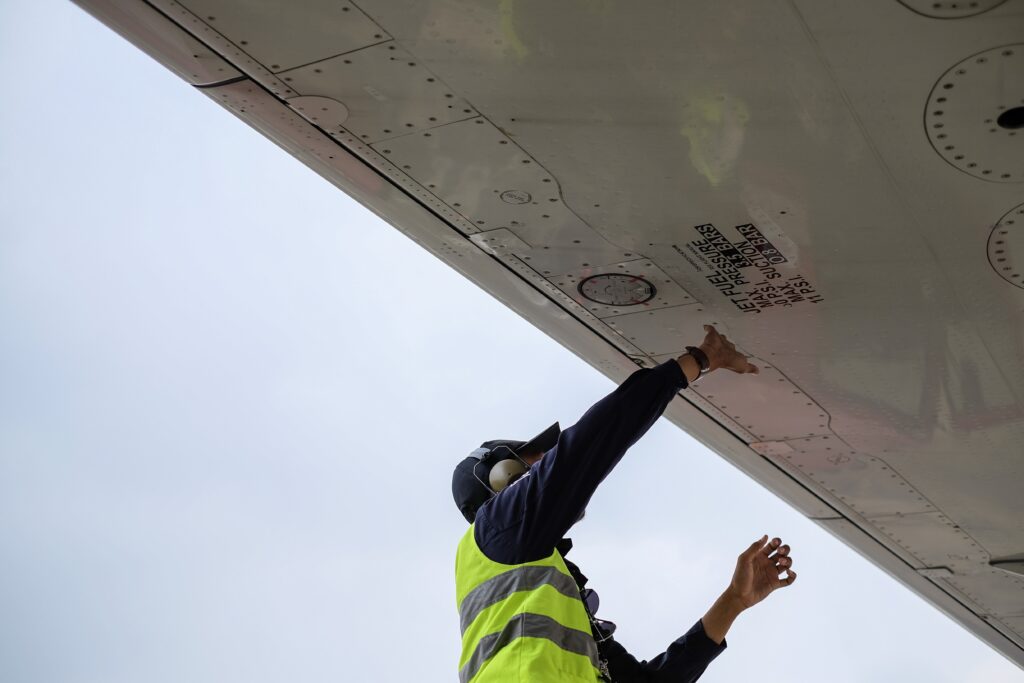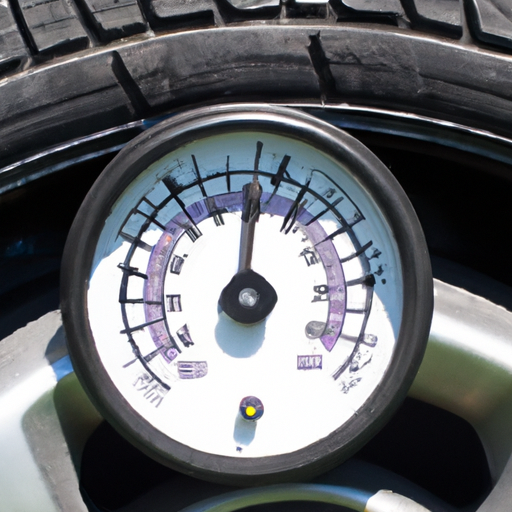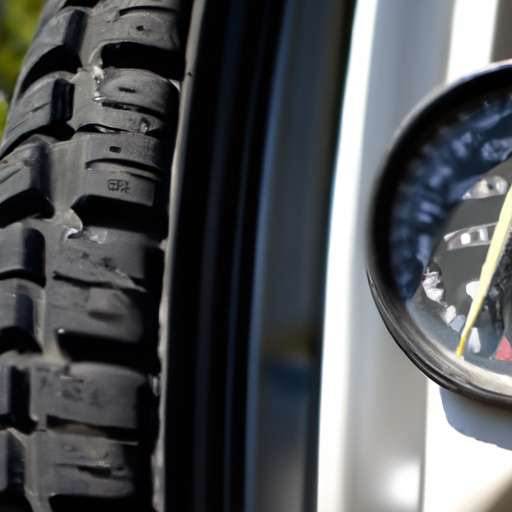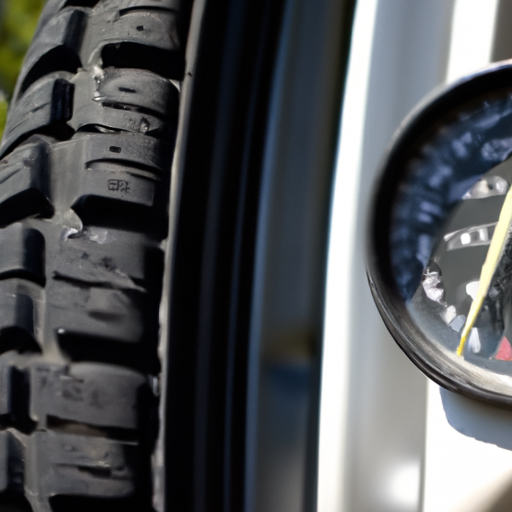If you’re a car owner or planning to hit the road this summer, it’s important to know the recommended maintenance for your summer tires. As the heat intensifies, your tires play a vital role in ensuring a safe and smooth journey. From proper inflation to regular inspections, taking care of your summer tires will not only prolong their lifespan but also enhance your vehicle’s performance. Let’s explore some essential maintenance tips that will keep your summer tires in top-notch condition throughout the season.
1. Inspect Tread Depth
1.1. Importance of Adequate Tread Depth
Having adequate tread depth is crucial for the performance and safety of your summer tires. Tread depth is the measurement of the space between the top of the tire’s tread and the bottom of the tire’s deepest grooves. It plays a significant role in maintaining traction on wet and dry roads, as well as improving braking and handling capabilities.
1.2. How to Check Tread Depth
Checking your summer tires’ tread depth is a simple task that you can easily do on your own. One widely used method is the “penny test.” Hold a penny with Lincoln’s head upside down and insert it into the tire’s tread grooves. If you can see the top of Lincoln’s head, it indicates that your tread depth is too shallow, and it’s time to replace your tires.
1.3. When to Replace Tires
Knowing when to replace your summer tires is vital for maintaining optimal performance and safety. The general rule of thumb is to replace your tires when the tread depth reaches 2/32 of an inch (1.6 millimeters) or less. However, it’s recommended to replace them earlier, around 4/32 of an inch (3.2 millimeters), to ensure better traction and handling in various weather conditions.
2. Check Tire Pressure
2.1. Importance of Proper Tire Pressure
Maintaining the proper tire pressure in your summer tires is crucial for several reasons. Firstly, it directly affects the overall performance and fuel efficiency of your vehicle. Secondly, it ensures even tire wear, which prolongs the lifespan of your tires. Additionally, proper tire pressure enhances safety by improving traction, handling, and braking abilities.
2.2. Recommended Tire Pressure for Summer Tires
To find the recommended tire pressure for your summer tires, consult your vehicle’s owner’s manual or check the sticker located on the driver’s side door jamb. The recommended tire pressure may vary depending on your vehicle’s make and model, as well as the tire size. It’s essential to follow these guidelines to maintain optimal tire performance.
2.3. How to Check Tire Pressure
Checking your summer tires’ pressure is a relatively quick and simple task. Start by getting a tire pressure gauge, which is available at most automotive stores. Remove the valve cap from the tire, attach the tire pressure gauge firmly onto the valve, and take a reading. Compare the reading to the recommended tire pressure for your specific tires and adjust accordingly.
2.4. Tips for Maintaining the Correct Pressure
To maintain the correct tire pressure, it’s crucial to regularly check and adjust it as needed. It’s recommended to check your summer tires’ pressure at least once a month and before long trips. Remember to check the pressure when the tires are cold, as driving heats up the air inside, causing it to expand and increase the pressure reading. Always use a reliable tire pressure gauge for accurate measurements.

3. Rotate Tires
3.1. Reasons for Regular Tire Rotation
Regular tire rotation is a simple maintenance task that can significantly extend the lifespan of your summer tires. Rotating your tires involves moving them from one position to another, such as from the front to the back or diagonally. The main reasons for rotating your tires include promoting even tire wear, improving traction and handling, and maximizing tire performance.
3.2. Recommended Tire Rotation Patterns
The recommended tire rotation pattern may vary depending on your vehicle’s drivetrain (front-wheel drive, rear-wheel drive, or all-wheel drive) and the specific tire manufacturer’s guidelines. However, a common rotation pattern is the “front-to-back” method, where the front tires are moved straight back and the rear tires are crossed to the front. It’s best to consult your vehicle’s owner’s manual or a professional for the recommended rotation pattern.
3.3. When to Rotate Tires
It’s generally recommended to rotate your summer tires every 5,000 to 8,000 miles (8,000 to 13,000 kilometers) or every six months, whichever comes first. However, it’s essential to consider your driving habits, road conditions, and the tire manufacturer’s recommendations. Regular tire rotation ensures even tread wear and prolongs the overall lifespan of your summer tires.
4. Alignment and Balancing
4.1. Importance of Wheel Alignment
Proper wheel alignment is essential for the optimal performance of your summer tires. Wheel alignment refers to the adjustment of the angles of your vehicle’s wheels to the manufacturer’s specifications. When your wheels are properly aligned, it promotes even tire wear, minimizes rolling resistance, and enhances steering control and stability.
4.2. Signs of Misalignment
There are several signs that indicate your summer tires may be misaligned. These signs include uneven or rapid tire wear, pulling to one side while driving, a vibrating steering wheel, or a crooked steering wheel when driving straight. If you notice any of these signs, it’s crucial to have your wheel alignment checked and corrected by a professional.
4.3. Benefits of Tire Balancing
Tire balancing helps ensure a smooth and comfortable ride by minimizing vibrations caused by imbalances in the tires. Balancing involves adding or removing weights on the tire to equalize the weight distribution. Balanced summer tires help eliminate uneven wear, reduce stress on suspension components, and provide better control and stability while driving.
4.4. How Often to Perform Alignment and Balancing
It’s recommended to have your summer tires’ alignment checked at least once a year or if you notice any signs of misalignment. Additionally, it’s advisable to have your tires balanced whenever you replace them or if you experience vibrations while driving. Regular alignment and balancing will help maximize the lifespan of your tires and ensure optimal performance.

5. Visual Inspection
5.1. Checking for Signs of Damage or Wear
Regular visual inspections of your summer tires are essential for identifying any signs of damage or excessive wear. Inspect the tires for any cuts, bulges, or punctures that could lead to a blowout. Additionally, check for uneven tread wear, as it may indicate alignment or tire pressure issues. Identifying potential issues early on can prevent accidents and expensive repairs.
5.2. Tips for Spotting Potential Issues
Pay close attention to the overall condition of your summer tires during your visual inspection. Look for any sidewall damage, such as cracks or bubbles, which may be signs of tire aging or impact damage. Uneven tread wear, such as excessive wear on the inner or outer edges, may indicate alignment or suspension problems. Be thorough in your inspection to ensure your tires are in optimal condition.
5.3. When to Seek Professional Inspection
While regular visual inspections are important, it’s also crucial to have your summer tires professionally inspected on a regular basis. Schedule a professional inspection if you notice any significant damage, excessive wear, or if you’re unsure about the condition of your tires. Professional tire technicians have the expertise to detect and address any potential issues, ensuring your safety on the road.
6. Proper Storage
6.1. Steps for Storing Summer Tires
Proper storage of your summer tires during the off-season is essential to maintain their condition and prolong their lifespan. Start by cleaning the tires thoroughly to remove any dirt or debris. Once clean and dry, place each tire in a protective tire bag to prevent exposure to sunlight and air. Store the tires in a cool, dry, and well-ventilated area away from direct sunlight, heat sources, and chemicals.
6.2. Recommended Storage Conditions
When storing your summer tires, it’s important to create optimal storage conditions to prevent premature aging and damage. Keep the tires in a location where the temperature remains relatively stable, ideally between 40°F (4°C) and 85°F (29°C). Avoid stacking or hanging the tires, as this can cause deformation. If possible, store the tires on a rack or shelf to promote air circulation and minimize contact with the ground.
6.3. Tips for Prolonging Tire Lifespan
Proper storage is an integral part of prolonging the lifespan of your summer tires. In addition to following the recommended storage conditions, there are a few additional tips to keep in mind. Avoid storing tires near petroleum-based products or solvents as they can accelerate tire degradation. Regularly check the stored tires for any signs of damage or deterioration and address any issues promptly.

7. Regular Cleaning
7.1. Importance of Cleaning Summer Tires
Regularly cleaning your summer tires is not only for aesthetic purposes but also for maintaining their performance and lifespan. Dirt, road grime, and brake dust can accumulate on the surface of the tires, which can degrade the rubber compounds over time. Cleaning the tires helps remove these contaminants and prevent potential damage, resulting in better traction and overall tire health.
7.2. Recommended Cleaning Methods
When cleaning your summer tires, start by rinsing them with water to remove loose debris. Use a mild soap or specialized tire cleaner and a soft brush or sponge to scrub the tires gently. Pay attention to the tread grooves and sidewalls to ensure a thorough cleaning. Rinse off the soap or cleaner and dry the tires with a clean, lint-free cloth. Avoid using harsh chemicals or abrasive materials that may damage the tires.
7.3. Products to Avoid
Some products and cleaning methods should be avoided when cleaning your summer tires to prevent damage. Avoid using bleach, harsh chemicals, or household cleaning agents, as they can deteriorate the tire rubber. Additionally, avoid using abrasive brushes, steel wool, or scrubbing pads, as they can cause scratches or remove the protective coating on the tires. Stick to gentle cleaning products and materials specifically designed for tires.
8. Tire Repair and Replacement
8.1. Dealing with Tire Punctures
While summer tires are designed to be durable, they can still experience punctures from sharp objects on the road. If you encounter a tire puncture, it’s essential to address it promptly. If the puncture is small and within the repairable area of the tire, it can typically be repaired by a professional. However, if the puncture is large or in the sidewall, tire replacement may be necessary.
8.2. When to Repair vs. Replace Tires
Determining whether a tire should be repaired or replaced depends on the extent and location of the damage. Small punctures in the tread area can usually be repaired with a patch or plug. However, if the puncture is in the sidewall, the tire should be replaced, as sidewall damage compromises the structural integrity of the tire. It’s best to consult a professional tire technician for an accurate assessment.
8.3. Considerations for Tire Replacement
When considering tire replacement, several factors should be taken into account. These factors include the age of the tires, overall tread wear, and the climate and road conditions in your area. It’s recommended to replace summer tires every six to ten years, even if there is still tread depth remaining. Additionally, consider the specific tire manufacturer’s recommendations for optimal performance and safety.

9. Seasonal Transition
9.1. Preparing for Summer to Winter Transition
As the seasons change, it’s important to ensure a smooth transition from summer to winter tires. Before transitioning to your winter tires, thoroughly clean and inspect your summer tires for any signs of damage or excessive wear. Store them properly in a cool, dry place to prevent degradation. It’s also a good time to check your winter tires for proper tread depth and overall condition.
9.2. Tips for Safe Seasonal Change
When transitioning from summer to winter tires, ensure that your winter tires are in good condition and have adequate tread depth. Check the tire pressure and adjust it to the recommended level. Be mindful of the road conditions and the appropriate time to switch to winter tires, based on your region’s weather patterns. Properly storing your summer tires during the winter will help maintain their condition for the following season.
9.3. Monitoring Tire Condition during Transition
During the transition from summer to winter tires, it’s important to monitor the condition of your tires carefully. Keep an eye on the tread wear and any signs of damage as you switch between tire sets. If you notice any issues, such as uneven wear or significant damage, address them promptly to ensure optimal tire performance and safety throughout the seasonal transition.
10. Professional Tire Service
10.1. Benefits of Professional Maintenance
Seeking professional tire service offers several benefits for the performance and longevity of your summer tires. Professional technicians have the expertise and specialized equipment to accurately inspect, repair, or replace your tires. They can also provide valuable guidance on proper tire maintenance and recommend the most suitable tires for your vehicle and driving conditions.
10.2. Signs It’s Time for Professional Attention
While regular maintenance tasks can be done by yourself, certain signs indicate the need for professional attention. If you experience significant vibrations, notice unusual tire wear patterns, or encounter recurring tire-related issues, it’s best to consult a professional. Additionally, if you’re unsure about the condition or performance of your summer tires, a professional inspection can provide peace of mind.
10.3. Finding a Reliable Tire Service Provider
When looking for a reliable tire service provider, consider their reputation, experience, and customer reviews. Look for technicians who are certified by recognized organizations in the automotive industry. It’s also beneficial to choose a provider that offers a wide range of tire services, including inspections, repairs, installations, and rotations. Personal recommendations from trusted friends or family members can also help guide your decision.


